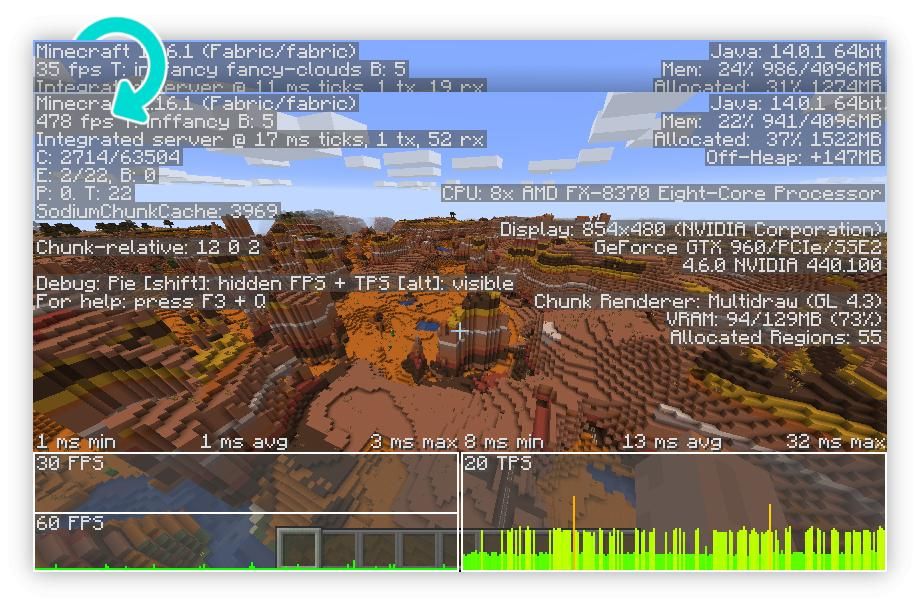Minecraft players are always on the lookout for new mods to enhance their experience, and Sodium is one of the most popular.
Minecraft has maintained its dominance as one of the most popular games, and we’ve seen some exciting updates released over the past few months. With the release of Caves and Cliffs Part 2, a plethora of new things have fallen into the game.
- FOLLOWING: Where is the location of Fortnite Spider-Man Mythic Web Shooter?
With the release of new updates, mods often stop working and players have to look for new versions of the mod. One of those mods is sodium, which dramatically improves performance. Here’s everything you need to know about it.
Minecraft | Now official trailer
BridTV
7024
Minecraft | Now official trailer
https://i.ytimg.com/vi/I7nHnsAwTIc/hqdefault.jpg
913027
913027
center
26546
How to download Minecraft 1.18.1 Sodium 1.17
Installing and downloading Sodium is quite a complicated process for Minecraft players. First of all, you need to make sure that you have Fabric Loader. For this you need to go to the Fabric download page here then install it. Make sure you are using the correct mapping and loader versions before installing it.
Next, you need to make sure that you have downloaded Sodium. You can easily get it from here. Go to the Run menu, type% appdata% . Minecraft mods and click on Run. Paste the Sodium folder here. Once done, simply start the Minecraft launcher and select Fabric to start using Minecraft with Sodium.
Features of Minecraft Sodium
- A modern OpenGL render pipeline for rendering blocks that takes advantage of multi-drawing techniques, allowing a significant reduction in CPU overhead (~ 90%) when rendering the world. This can make a huge difference in frame rates for most computers that are not bottlenecked by the GPU or other components. Even if your GPU can’t keep up, you’ll enjoy much more stable frame times thanks to the processor being able to work on other rendering tasks while it waits.
- Top data for rendered chunks is made much more compact, reducing video memory and bandwidth requirements by almost 40%.
- Updates to nearby blocks now benefit from multi-threading, greatly reducing lag spikes caused by chunks needing to be updated.
- The faces of chunks that aren’t visible (or that aren’t facing the camera) are removed very early in the rendering process, eliminating a ton of geometry that would have to be processed on the GPU to be immediately removed. For integrated GPUs, this can significantly reduce memory bandwidth requirements and provide modest acceleration even when linked to the GPU.
- Lots of optimizations for chunk loading and block rendering, making chunk loading much faster and less damaging to frame rates.
- Lots of optimizations for building vertices and matrix transformations, dramatically speeding up rendering of block entities, mobs, and objects when you get carried away by placing too many chests in a room.
- Numerous improvements to the way the game manages memory and allocates objects, reducing memory consumption and lag spikes caused by garbage collector activity.
- Lots of graphical fixes for smooth lighting effects, making the game run better while applying a fair amount of optimization.
- Soft lighting for fluids and other special blocks.
- Smooth blend of biomes for blocks and fluids, delivering dramatically improved graphics quality that requires significantly less computation.
- Animated textures that are not visible in the world do not update, which makes updating textures faster on most hardware (especially AMD cards.)
Do you have something to tell us about this article?

